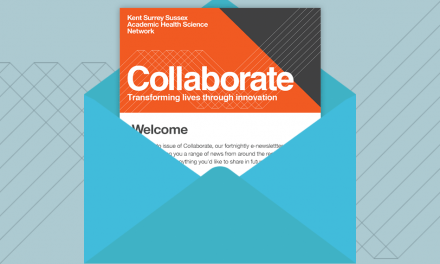Sarah Barker, Innovation Manager at Health Innovation KSS, shares her insights into how innovation can help address inequalities in cancer diagnosis and the importance of involving patients and the public in developing such innovations.
Cancer will affect one in two of us in our lifetimes, but its impact is not felt equally across our population. Significant inequalities exist. For example, black men are two to three times more likely to develop prostate cancer than their white counterparts, and the death rate is twice as high(1). People with cancer in the most deprived areas are 50% more likely to be diagnosed after an emergency presentation, and at a later stage, than those in the least deprived areas(2).
There are significant forces at play – health is determined by a range of social, economic and environmental factors, as well as genetics, lifestyle and exposure to chemicals. But can innovation help to address these inequalities? In my role as cancer portfolio lead for Health Innovation Kent Surrey Sussex, I think it is vital that innovators do everything they can to ensure that their innovations do just that.
Bringing an innovation into the NHS is not enough, unless we also ensure equity of access and equity of uptake. And equity is not the same as equality; we may have to work harder to give certain groups of our population the same level of access that other groups already enjoy.
We must, at a minimum, make sure that no groups are excluded from benefiting from healthcare innovations. My colleague, Kath Sykes, has recently blogged about digital inclusion which is so important to consider with any digital innovation. We also need to think about physical access to healthcare settings, public transport links etc. and to ensure we explain things in a language that people can understand, whether that be easy-read, plain English, or other languages.
One of the most important things to consider when bringing any innovation to the healthcare market is to involve patients and the public in what you are doing. Patient and Public Involvement and Engagement (PPIE) needs to be integral to the development of any new service or pathway and, above all, it needs to be meaningful. Most funding grant competitions now include PPIE as a criterion when judging applications, and it isn’t enough to consult with a handful of people with lived experience. What really makes the difference is true community engagement with the population your innovation is looking to serve. So, if your innovation is looking to reduce the percentage of people from more deprived areas who receive their cancer diagnosis in the emergency department, you need to understand what stops them from seeking help via other non-emergency routes.
If you’re developing an innovation to help cancer patients, I’m more than happy to help you consider healthcare inequalities and how to involve patients and the public in your work, so please do reach out. You can contact me by email (sarah.barker60@nhs.net), via LinkedIn or I’ll be at the Bridging the Gap event in Cambridge on 25 March. For more info click here.
References:
1 Professor Frank Chinegwundoh MBE. NHS England Blog, 12 June 2018
2 Cancer Research UK. Cancer in the UK 2020: Socio-economic deprivation, September 2020





